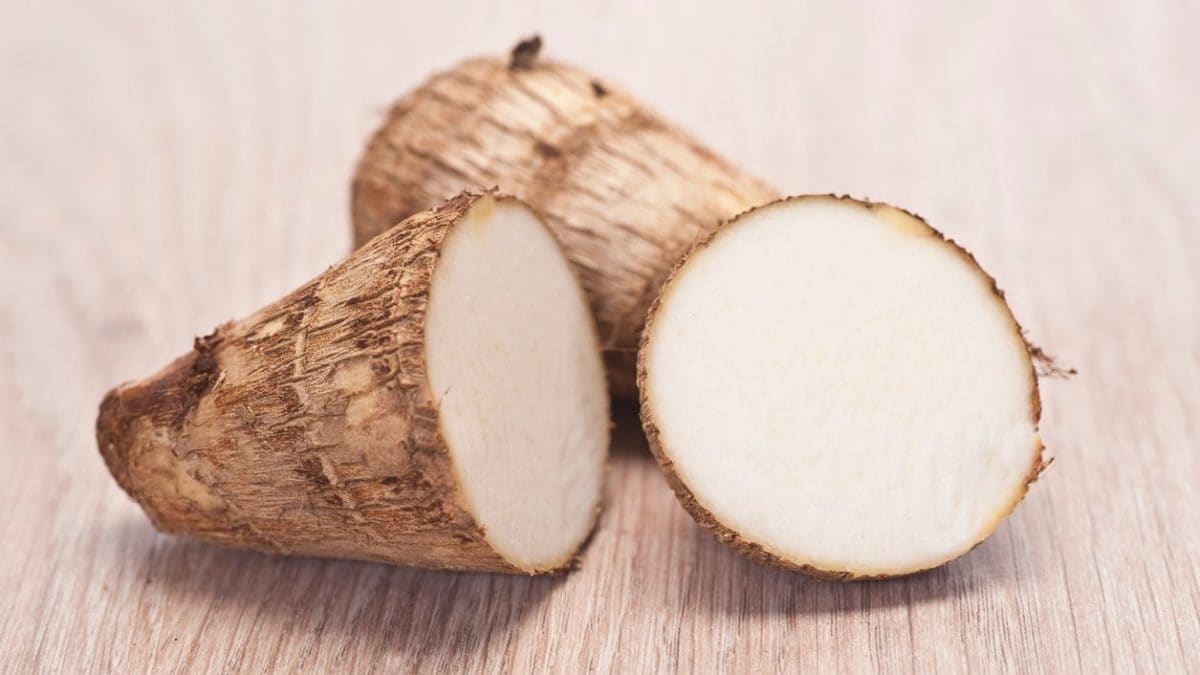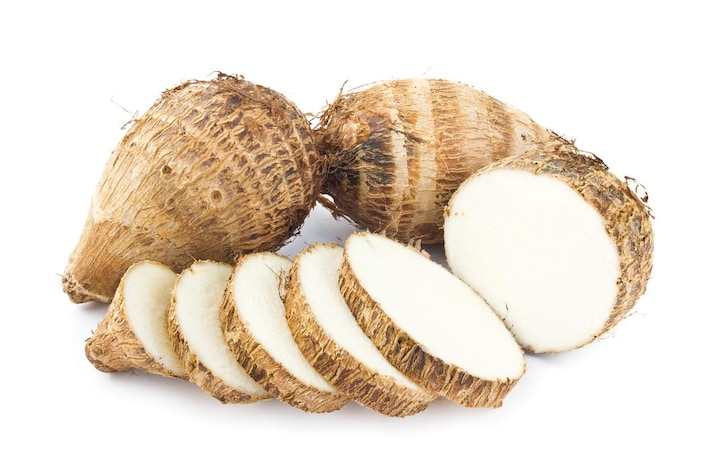
Taro is the edible root of Colocasia esculenta, a tropical plant belonging to the Araceae family, cultivated for ornamental purposes as well as for food. Also known as eddo, taro occurs as a root or tuber with a thin, rough, dark red, almost chocolate-colored skin and firm, fleshy white flesh with possible purple highlights. A key ingredient in the culinary traditions of South American peoples and some African countries, taro has a particularly delicate flavor and, like common potatoes, can be used in a variety of preparations. It is precisely its versatility, combined with its interesting nutritional profile, that makes this ingredient increasingly curious and intriguing for those who love to experiment with new flavors and play with alternative ingredients. Let's discover everything there is to know about taro, its properties, and how to enjoy it in tasty recipes.
Taro's Properties and Benefits
Taro is a tuber that resembles the more famous potato not only in appearance (despite being slightly smaller) but also in nutritional value. A good source of carbohydrates, fiber, and minerals, including magnesium, iron, and calcium, taro also contains a good amount of vitamins, particularly vitamin B, vitamin A, and vitamin E. It's a highly digestible food that, unlike potatoes, doesn't cause blood sugar levels to rise, making it suitable for diabetics. Valued for its diuretic effect, taro has antioxidant properties due to the presence of anthocyanins, and is useful for protecting and strengthening the immune system, thanks to the vitamin C.

How to Use Taro in Cooking
Among the staples of many South American diets, beloved in Eastern cuisine, and a staple in Oceania and some continental African countries, taro is a tuber with a very delicate flavor, making it incredibly versatile in the kitchen, so much so that it can be used to prepare sweet dishes as well as savory recipes. Once peeled and cleaned, the taro pulp can be simply steamed, boiled, or sautéed and served as a side dish to accompany pork or beef dishes, flavors with which this tuber pairs perfectly. Taro chips are excellent, fried in hot oil just like regular potatoes, and should be eaten strictly by hand.

In Chinese tradition, taro is used to fill delicious ravioli, while in Japan it's paired with a fragrant fish broth. For those who want to venture into the familiar, we recommend using taro to make a simple yet delicious puree: simply steam it and then mash it with milk or water. We said sweets, and we weren't kidding: powdered taro root mixed with milk and tapioca pearls makes bubble tea, the refreshing, thirst-quenching drink everyone's talking about and increasingly found on the streets of our cities.
Arrowroot Vs. Taro Root: Are They The Same Thing?
Arrowroot and taro root are not the same—though both are starchy tropical plants, they differ in taste, texture, and culinary uses. Arrowroot is a tuber known for its fine, white starch powder often used as a thickening agent in sauces, soups, and desserts because it’s flavorless and forms a clear, glossy gel when cooked. It’s especially prized in gluten-free and allergen-sensitive recipes. Taro root, on the other hand, is larger and more fibrous, with a slightly sweet, nutty flavor. It’s typically cooked and eaten like a potato in savory dishes such as stews, curries, or chips. While arrowroot is used mainly for texture and binding, taro is a substantial ingredient that adds both body and flavor to meals.
;Resize,width=767;)
